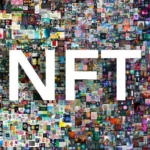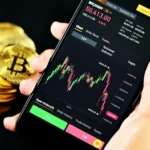NFTs (Non-Fungible Tokens) have transformed the way creators monetize digital content. From digital art to music, collectibles, and even tweets, NFTs let you verify ownership and provenance using blockchain technology. If you’re looking to create and mint your own NFT, this guide will walk you through every step, tool, and tip you need to succeed.
What is an NFT?
An NFT is a digital asset that represents ownership or proof of authenticity of a unique item, recorded on a blockchain. Unlike cryptocurrencies such as Bitcoin or Ethereum, NFTs are not interchangeable—each one has a unique value.
Why Create an NFT?
NFTs enable digital ownership, direct-to-fan sales, and royalties on secondary sales. Artists, musicians, gamers, and content creators benefit by:
- Monetizing digital work
- Gaining exposure through marketplaces
- Retaining control and royalties
- Expanding their audience reach
Choosing the Right Blockchain
Not all NFTs are created on the same blockchain. The most popular ones include:
| Blockchain | Pros | Cons |
|---|---|---|
| Ethereum | Widely supported, high liquidity | High gas fees |
| Solana | Fast, low fees | Less established market |
| Polygon | Low cost, Ethereum-compatible | Smaller community |
| Tezos | Eco-friendly, low fees | Fewer marketplaces |
Pick a blockchain based on your priorities: cost, community, and eco-friendliness.
Setting Up a Crypto Wallet
A crypto wallet is essential to interact with blockchain and receive payments. Top options include:
- MetaMask (Ethereum, Polygon)
- Phantom (Solana)
- Temple Wallet (Tezos)
When setting up a wallet:
- Secure your seed phrase
- Enable two-factor authentication (2FA)
- Fund your wallet with crypto (ETH, SOL, etc.)
Picking an NFT Marketplace
Different marketplaces cater to different audiences and blockchains:
| Marketplace | Blockchain | Best For |
|---|---|---|
| OpenSea | Ethereum, Polygon | General NFTs |
| Rarible | Ethereum, Flow | Customizable collections |
| Magic Eden | Solana | Gaming and art |
| Foundation | Ethereum | High-end digital art |
| Objkt | Tezos | Art and photography |
Choose based on your content type, audience, and blockchain preference.
Preparing Your Digital Asset
Your NFT can be:
- Images (JPEG, PNG, GIF)
- Videos (MP4, MOV)
- Audio files (MP3, WAV)
- 3D models (GLB, OBJ)
Tips:
- Optimize file size for quick loading
- Use high-resolution assets
- Create multiple formats if needed
Understanding NFT Metadata
Metadata gives your NFT context and helps collectors understand what they’re buying. It includes:
- Title
- Description
- Creator name
- Creation date
- Attributes (rarity, edition number, etc.)
- External links
Creating Your NFT
Once your file and metadata are ready:
- Go to your chosen marketplace
- Connect your wallet
- Click “Create NFT”
- Upload your digital file
- Add metadata
- Choose collection or standalone
Minting Your NFT
Minting is the process of publishing your NFT to the blockchain.
Steps:
- Review and confirm metadata
- Choose whether to mint now or lazy mint (deferred until sale)
- Pay gas fees if applicable
- Wait for confirmation from the blockchain
Some platforms offer gasless minting to reduce upfront costs.
Setting Royalties and Listing for Sale
Royalties let you earn a percentage each time your NFT is resold.
Common royalty settings:
- 5% to 10% per resale
- Set during minting or listing
Next:
- Set your price (fixed or auction)
- Choose sale duration
- Publish listing
Marketing Your NFT
Creating is only half the job—promotion is key:
- Use social media (Twitter, Instagram, Discord)
- Build a community around your art
- Collaborate with influencers or fellow creators
- Use email lists or blogs to announce drops
- Participate in NFT events or expos
Legal and Copyright Considerations
Make sure you:
- Own full rights to the content
- Avoid copyrighted material unless licensed
- Include clear terms of use
- Understand the legal implications of royalties and IP transfer
NFTs do not automatically transfer copyright unless explicitly stated.
Common Mistakes to Avoid
- Using copyrighted content without permission
- Ignoring platform terms
- Not backing up wallet seed phrase
- Overpricing NFTs with no demand
- Poor metadata or presentation
Costs Involved in Minting NFTs
| Item | Estimated Cost |
|---|---|
| Gas Fees (Ethereum) | $20 – $200 |
| Listing Fees | Free – $10 |
| Marketplace Commission | 2% – 15% |
| Royalty Fee on Resale | 5% – 10% |
Use layer 2 solutions (Polygon, Arbitrum) to lower minting costs.
Future Trends in NFTs
- Fractional NFTs: Shared ownership models
- NFTs in gaming: In-game items as tradable assets
- Dynamic NFTs: Assets that evolve or react
- Real-world assets as NFTs: Property deeds, concert tickets
- AI-generated NFTs: Unique outputs from generative models
ALSO READ: How to Build a Balanced Crypto Investment Portfolio?
Conclusion
Creating and minting an NFT is now more accessible than ever. Whether you’re an artist, musician, or digital innovator, NFTs offer a powerful way to share and monetize your work. By choosing the right tools, platforms, and promotional strategies, you can tap into this thriving digital economy. Always stay informed, experiment wisely, and focus on creating value for your audience.







